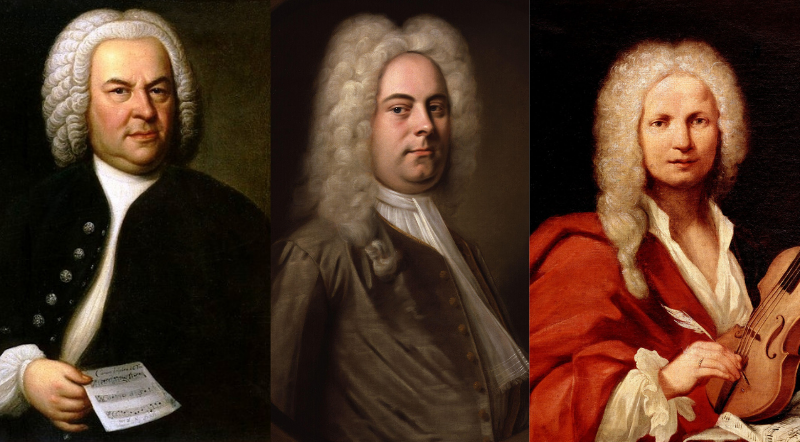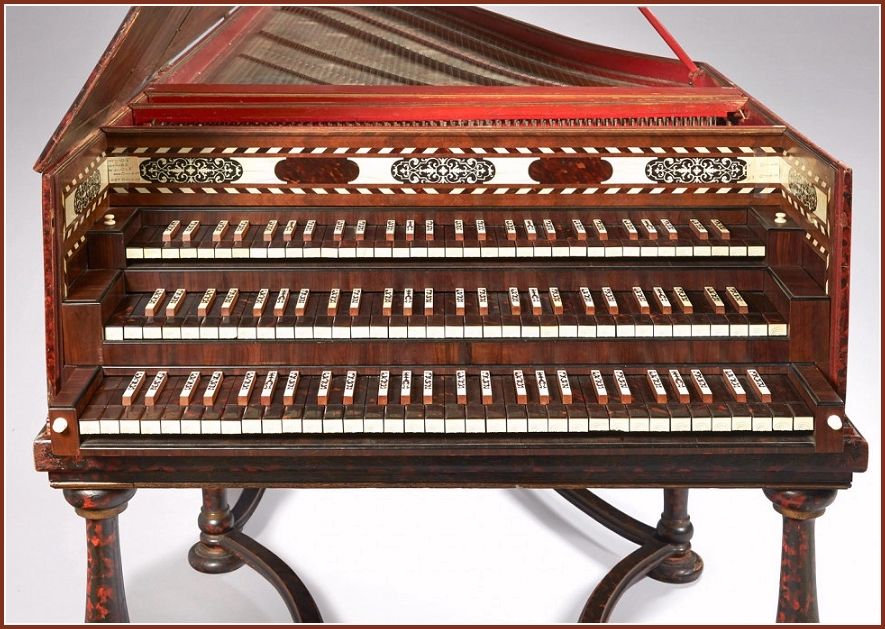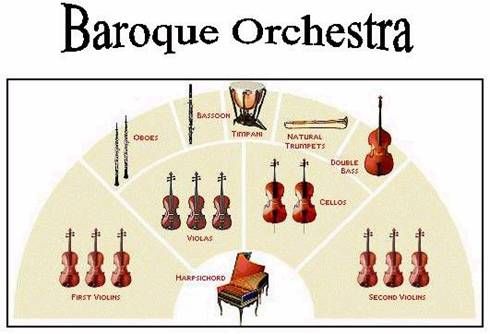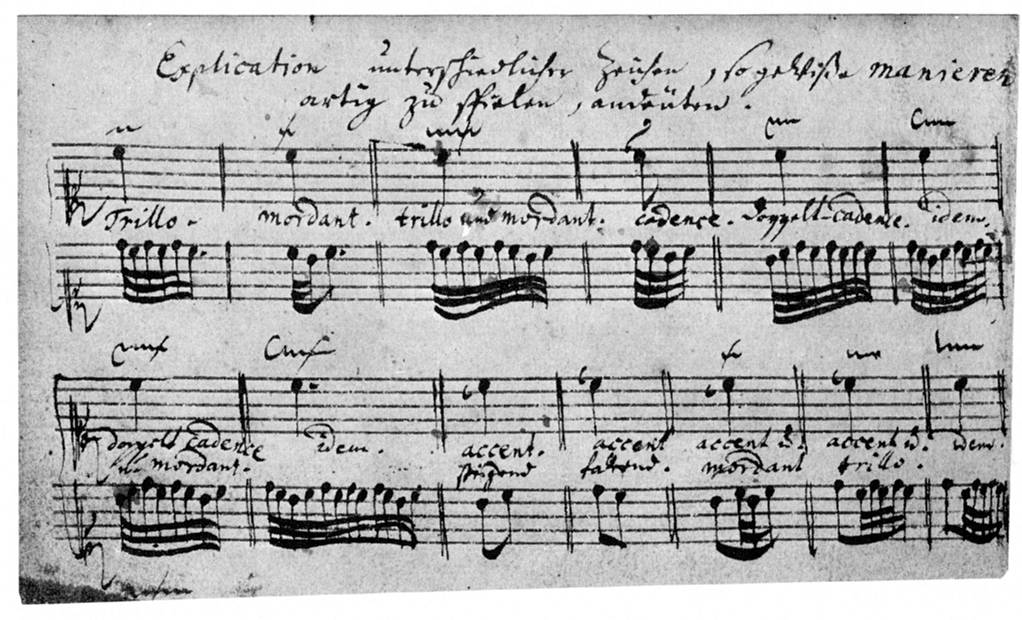Baroque Music 1600-1750

This week, I will be sharing a piece of Baroque Music every day. This is for my students to listen to and develop their aural skills.
Baroque Music was composed between 1600 – 1750. Main Composers of the period include Bach, Handel, Scarlatti, Vivaldi.
Grade 5 and above students need to be familiar with features of this style.
Here is a beautiful piece by Bach, 2 Part Invention No.13 in A Minor. Imitative (polyphonic) texture of 2 independent parts; continuous flow.
https://www.youtube.com/watch?v=-EtlZN1XrcM
Handel is another Baroque master
1st movement, Adagio Suite in F major, HWV 427
Extensive ornamentation, flowing, homophonic. Keyboard range – the smallest range of the periods you are dealing with, usually within 2 octaves either side of middle C.
https://www.youtube.com/watch?v=aXkXmxSEhZU
Baroque music is also characterised by an increased emphasis on contrast. This is heard in a number of ways:
loud and quiet dynamics (volume) – Baroque composers used block dynamics – this is where the volume of the music changes abruptly rather than through a gradual crescendo/diminuendo. You can often hear this effect between the quieter solo and louder tutti sections of a concerto grosso in today's piece by Corelli.
solo and ensemble instrumentation (e.g. in the concerto),
different instrumental timbres/sounds.
Concerto grosso in F major, Op.6 No.2 by Corelli
Now for some Vivaldi! Famous for the Four Seasons but this is a wonderful piece of choral music. Gloria.
The orchestration is typically Baroque with solo oboe, solo trumpet, violins, violas and bass continuo (harpsichord, cello and bass). The uplifting nature of the Gloria, with its distinctive melodies and rhythms, is characteristic of all Vivaldi’s music, giving it an immediate and universal appeal. Notice the harpsichord. How many beats are in a bar? Can you notate the rhythm of the first two bars? Describe the tonality (major or minor), tempo and the dynamics.
https://www.youtube.com/watch?v=gICDWQXtL0k
Domenico Scarlatti, Sonata in D minor, K. 1
Scarlatti keyboard sonatas, also called Scarlatti harpsichord sonatas, is a group of 555 sonatas for harpsichord by Domenico Scarlatti, dating from the early 18th century. In modern performance the sonatas are usually performed on the piano. Listen to the following two versions of the piece; one on harpsichord, the other piano. The piece is largely homophonic but with imitative elements full of busy repeated patterns with a lot of ornaments.
https://www.youtube.com/watch?v=lrrCDsxI5eQ
https://www.youtube.com/watch?v=nRZNw3QRo8I
Bach Prelude and Fugue No.2 in C minor, from “The Well-Tempered Clavier”, Book 1
Prelude: regular repeated pattern; cadences blend into the flow; emotionally serious;
Fugue: a contrapuntal, polyphonic piece with 3 independent parts or ‘voices’.
https://www.youtube.com/watch?v=HB8-w5CvMls
Useful information about fugues can be found here:




